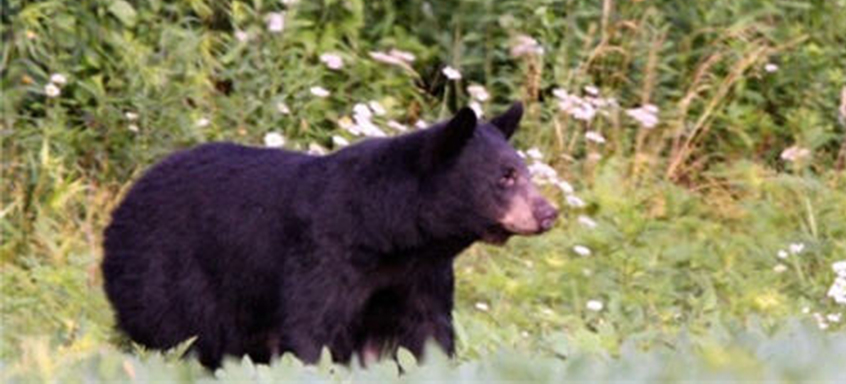

HOCKESSIN/PIKE CREEK, DELAWARE (5/18/2016) Two rare black bear sightings in Hockessin and Pike Creek have been confirmed by state wildlife experts.
“Black bear populations within our neighboring states of Maryland, New Jersey and Pennsylvania have expanded over the past several decades. As a result, we are not surprised to have a bear find its way into Delaware,” said Joe Rogerson, program manager for Species Conservation and Research, Division of Fish & Wildlife. “It wasn’t a question of if, but when it would happen.”
The Division of Fish & Wildlife received several reports of a possible black bear sighting in northern New Castle County, and a biologist from the Department of Natural Resources and Environmental Control found evidence of feeding and tracks left by the bear at two locations.
Earlier, New Castle County police had reported one sighting was about 11 p.m. Tuesday in the 100 block of Dewberry Drive in the Ramsey Ridge community, off Old Wilmington Road in Hockessin. Another was 2.7 miles southwest, in the first block of Woodward Drive in the Wood Creek neighborhood, off Limestone Road in Pike Creek, about 6:45 a.m. today.
A resident in Ramsey Ridge told police the bear was in his backyard helping itself to trash, a bird feeder and birdbath before heading in the direction of Blueberry Court. Officers searched the area but couldn’t locate the animal.
In Wood Creek, a caller told police the bear was alongside his home and then it ran to the area of Wood Creek Park. Police searched the area but couldn’t find the bear.
While black bear are known to live in parts of southeastern Pennsylvania and were long ago native to Delaware, sightings in Delaware have been unknown in recent times.
Last week, a bear was reported in the Fairmount Park area of Philadelphia and on Monday one was reported in Delaware County, Pennsylvania, near the U.S. 1 and U.S. 202 intersection.
In 2009, Maryland wildlife officers captured a black bear near Centreville, on the Eastern Shore, and found that it had been captured the previous year 110 miles away, near Trenton, New Jersey. Authorities there had tagged it and released the bear in a wildlife area.
Police offered these safety tips should residents encounter a bear:
• Remain calm if you encounter a bear. Do not run from it.
• Make the bear aware of your presence by speaking in an assertive voice, singing, clapping your hands, or making other noises.
• Make sure the bear has an escape route.
• Avoid direct eye contact, which may be perceived by a bear as a challenge. Never run from a bear. Instead, slowly back away.
• To scare the bear away, make loud noises by yelling, banging pots and pans or using an airhorn. Make yourself look as big as possible by waving your arms. If you are with someone else, stand close together with your arms raised above your head.
• The bear may utter a series of huffs, make popping jaw sounds by snapping its jaws and swat the ground. These are warning signs that you are too close. Slowly back away, avoid direct eye contact and do not run.
• If a bear stands on its hind legs or moves closer, it may be trying to get a better view or detect scents in the air. It is usually not a threatening behavior.
• Black bears will sometimes “bluff charge” when cornered, threatened or attempting to steal food. Stand your ground, avoid direct eye contact, then slowly back away and do not run.
• If the bear does not leave, move to a secure area.
• Black bear attacks are extremely rare. If a black bear does attack, fight back!
Anyone seeing a bear is asked to call the Fish and Wildlife Natural Resources Police at (800) 523-3336. If someone is in immediate danger, call 911.